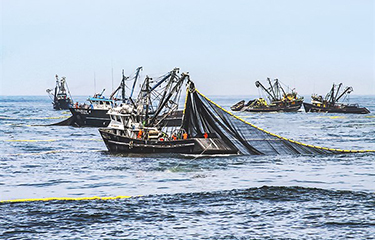Peru closes north-central region anchovy season at just 84 percent of TAC

Peru’s Ministry of Production (PRODUCE) has called an end to the first anchovy fishing season of 2022 in the country's north-central region, with total catchment reaching 2.34 million metric tons (MT) – or 84.06 percent of the total allowable catch (TAC).
The ports of Chimbote, Callao, Coishco, Malabrigo, and Chancay were the top five ports where anchovy were landed, the head of PRODUCE, Jorge Prado Palomino, said in a release. Chimbote caught 588,000 MT, Callao 283,000 MT, Coishco 260,000 MT, Malabrigo 231,000 MT, and Chancay caught 196,000 MT.
The first season began on 4 May, with a total quota of 2.79 million MT assigned, and officially closed on 24 July. However, during the season it was noted that conditions in the north-central region were challenging. Adriana Giudice, the CEO of Peruvian fishing company Austral Group, told SeafoodSource in June that weather and oceanographic issues were “difficult,” while the high presence of juveniles led PRODUCE to periodically banning fishing activity in certain areas. The Austral Group is owned by Norway-based Austevoll Seafood and produces about 10 percent of the fishmeal and fish oil that Peru exports.
While the season did not reach this year’s TAC, it still caught significantly more fish than in 2021, when the TAC was set to 2.047 million MT. That season, the north-central fishery caught just over 2 million MT, reaching 98 percent of the total quota.
Earlier in July, PRODUCE opened the second anchovy fishing season of the year in the country's south region, setting a TAC of 486,500 MT. That season is slated to run through December, or until the TAC is reached, whichever comes first.
Both the TAC and the final date of the southern region’s second fishing season may also be modified according to biological-environmental conditions, based on findings from the Peruvian Sea Institute (Imarpe) – a technical agency within PRODUCE that advises the state on marine conservation issues and that performs studies to evaluate the status of the Peruvian anchovy biomass.
Peru divides its anchovy fishing areas into two regions – south and north-central – with different capture limits and seasons set for each. The north-central is Peru’s main fishing region, with capture measuring several times that of the south region. The fishery, which targets both Engraulis ringens and Anchoa nasus for use in indirect human consumption – primarily fishmeal and fish oil used in aquaculture production – is the largest by volume in the world.
Photo courtesy of PRODUCE






Share